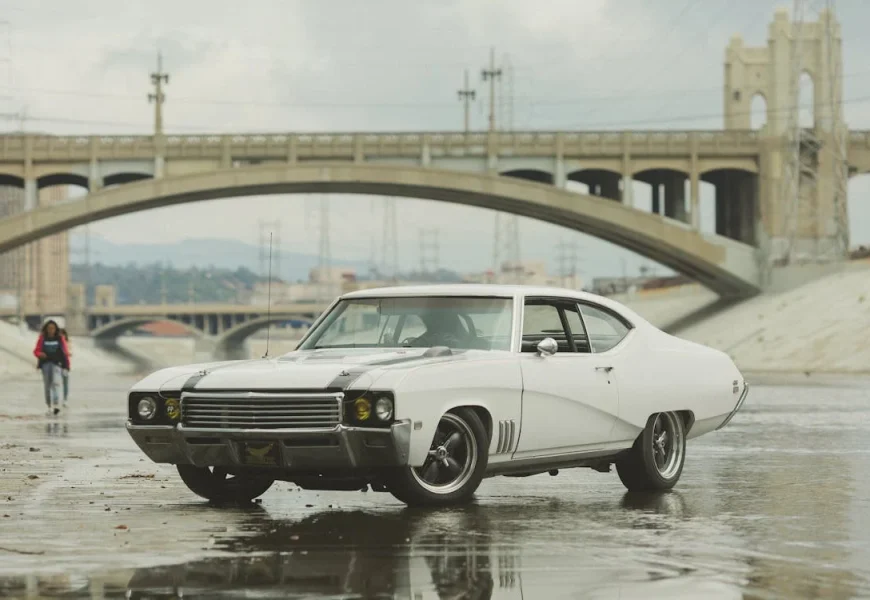Introduction: The Allure of Salvage Cars
Imagine finding a dusty, rusted, and nearly forgotten car in a junkyard. To many, it’s just a wreck, but to a few, it’s a hidden gem waiting to be brought back to life. Salvage car restoration has become more than a hobby; it’s a way to blend craftsmanship with a love for automobiles, transforming what was once junk into something valuable and beautiful. Let’s dive into these salvage success stories and explore why people restore wrecked cars and how it’s done.
Why Restore a Wrecked Car?
Restoring a wrecked car might seem like a monumental task, but there’s something deeply satisfying about it. For some, it’s the joy of saving a piece of automotive history. For others, it’s a way to make an environmentally friendly choice by reducing waste. Salvage restorations can also be financially rewarding, as a restored classic or luxury vehicle often has a high resale value.
Evaluating the Potential of a Salvage Car
Not every car removal brisbane is worth restoring. Factors like age, rarity, brand, and the extent of damage can determine whether a salvage project will be worth the effort. For instance, rare vintage cars or models with strong followings tend to have more value. On the other hand, newer cars with minor damage may be restored and even sold for profit.
The Process of Salvaging: From Start to Finish
Bringing a salvaged car back to life is like solving a complex puzzle. Each piece must fit just right for the final product to shine. Here’s a step-by-step look at the process:
- Inspection and Assessment: Examining the vehicle thoroughly helps identify damage and create a restoration plan.
- Planning the Restoration: This includes sourcing parts, estimating costs, and setting timelines.
- Dismantling and Repair: Removing damaged parts, repairing or replacing them, and preparing the car for reassembly.
- Reassembly and Testing: Once repairs are done, the car is reassembled, and the restoration is tested.
Tools and Techniques for Successful Salvaging
In the world of salvage restoration, having the right tools is essential. Common tools include welding machines, sandblasters, and diagnostic tools to assess mechanical issues. Knowledge of techniques like metal fabrication, paint restoration, and upholstery repair can make all the difference in creating a car that looks and runs like new.
Stories of Restored Classics
Restoration stories often revolve around classic cars that have been given a second chance. Take, for example, the 1967 Ford Mustang, once thought to be a lost cause due to severe rust and engine issues. But with patience, precision, and passion, it was restored to its original condition, bringing joy to a new owner and preserving a piece of automotive history.
Turning Modern Vehicles into New Again
While classic cars tend to capture the spotlight, modern vehicles are also frequent salvage projects. Luxury brands like BMW, Mercedes-Benz, and Tesla have strong markets for salvaged and restored vehicles. These vehicles can be more complex due to the advanced electronics and technology, but they offer unique challenges and rewards for those willing to dive in.
Budgeting for a Salvage Restoration Project
Restoring a salvage car isn’t cheap, but it can be manageable with a smart budget. Costs can vary widely depending on the extent of damage, type of vehicle, and parts availability. Budgeting for tools, parts, labor, and unexpected costs is crucial for a successful restoration.
The Environmental Impact of Salvaging
Beyond the beauty of a restored car, there’s an added benefit to salvaging: it’s good for the environment. By giving new life to a wrecked car, restorers help reduce waste, conserve resources, and minimize the environmental impact that comes with producing new vehicles.
Challenges and Rewards of Salvaging
Restoring a salvaged car can be both challenging and rewarding. The work is often labor-intensive and can require specialized skills. Yet, the satisfaction of seeing a car transformed from wreckage to a stunning vehicle on the road makes every challenge worth it.
Building a Community of Salvage Enthusiasts
Car enthusiasts around the world connect through salvage restoration. Sharing tips, trading parts, and offering encouragement has built a supportive community for both beginners and experienced restorers. Salvage car clubs and online forums allow people to connect, learn, and share stories.
Tips for Aspiring Salvagers
Thinking of starting your own salvage project? Here are some tips:
- Start Small: Begin with simpler projects to build skills.
- Set Realistic Goals: Salvage restoration can take time; set achievable timelines.
- Learn from Others: Connect with experienced salvagers for guidance. cars wreckers brisbane
Conclusion: The Art and Heart of Salvage Restorations
Salvage car restoration is an art form that requires patience, skill, and a love for automobiles. It’s about seeing potential where others see scrap, transforming a wreck into a symbol of craftsmanship. As more people embrace the challenges and joys of salvaging, this unique hobby is breathing new life into forgotten cars and giving them a chance to shine once more.








